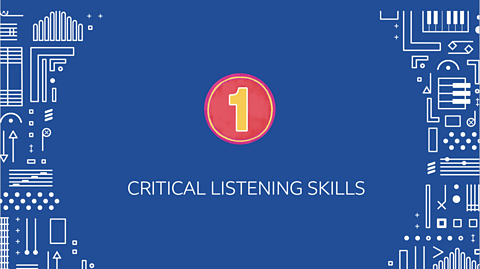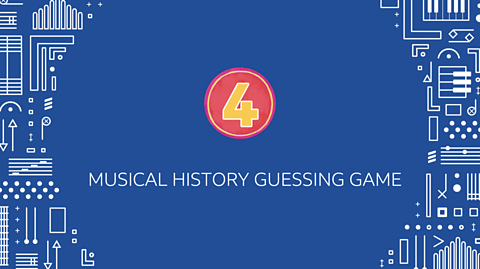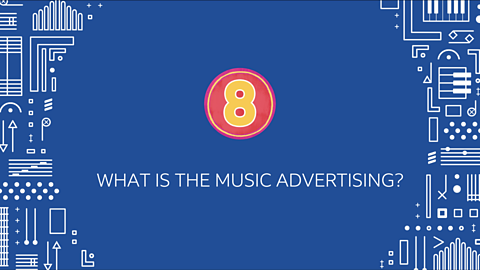These 10 quickfire ideas can be easily adapted for any students aged 7-14.

1) Critical Listening Skills
Choose a piece at random from the composer A-Z
Watch the performance film or listen to the audio file on each composer page
After listening, ask the children to describe what they heard using musical descriptions e.g. fast/slow, loud/soft, change of speed (tempo), change of mood
If there's time:
- Watch the introductory film and/or share the 'about' and 'listen out for' details and ask children to write down what they like and don't like about the music.

2) An Artistic Approach
Provide paper, colouring pencils / felt tips
Select a piece at random from the A-Z of composers
Play the audio recording
Ask the children to respond to what they hear with colours, shapes and patterns
If there's time:
- Children could have fun trying to 'perform' their neighbour's 'graphic score' by using their voice or body percussion to represent the shapes/patterns on the paper

3) Creative writing
Choose a piece at random from the composer A-Z
Before playing the audio file, explain to children to imagine it's the soundtrack to a film
While the audio is playing, they should just listen and imagine (you may wish to play the track more than once)
After listening, ask them to write an outline for the film that they imagine the music suggests (there is no wrong answer!)
If there's time:
- Ask the children to create a storyboard for their film

4) Musical history guessing game
Choose 3 pieces of music from different time periods (using the Periods index)
Play the 3 pieces of music (audio or performance film), naming the pieces A, B and C (if you are very short of time,just play the first 1 or 2 minutes of each piece)
Ask children to guess/discuss the historical order in which the pieces might have been written
If there's time:
- Watch the introductory film for each of the three pieces to learn in more detail when they were written

5) Focus on dynamics
Choose a piece of music from the Classical period or from the 'dynamics' list on the elements index
Ask the children to use their bodies to represent when the music is loud and when it's quiet i.e. when it's loud they stretch out and fill the space, when it's quiet, they curl up small in a ball etc

6) Can you find the pulse?
Choose a piece of music with a strong pulse (e.g. Laura Shigihara's Grasswalk or Margaret Bonds' Montgomery Variations)
Play the performance film or the audio file
Ask the children to tap their 2nd, 3rd, 4th, and 5th finger over and over again, trying to latch onto the pulse of the music
Once that is mastered, try drawing the sides of a square to the pulse or beat. Each new square starts on number one
If there's time:
Repeat with a tune that has 3 beats in a bar (e.g. London's Burning)
For a bit of fun, you could ask pupils to try and find the pulse in pieces with irregular time signatures, like Mars by Holst or Haven by Sally Beamish!

7) Spot the instrument
Choose a piece of music that has a prominent instrument or a couple of instruments within the orchestral mix (e.g Errollyn Wallen's Mighty River/horn, Laura Shigihara's Grasswalk/bassoon, Lili Boulanger's D'un matin de printemps/flute)
Watch the performance film first so that children have a chance to see the instrument(s) being played
Then play the audio file and ask children to raise their hand of keep a tally for every time they hear the nominated instrument
You may want to watch the whistle-stop tour of the orchestra film first a few times, to learn the instruments

8) What is the music advertising?
Choose a piece of music at random from our A-Z of composers
Actively listen to the audio only
Ask the children to note down the characteristics or feelings they can hear in the music (e.g. smooth, spikey, jolly, spooky etc)
Ask children to think of a household product or food that matches the characteristics they heard
If there's time:
Ask children to draw a poster to advertise their product, with a strapline featuring one or more of the characteristics or feelings they noted down
Choose a contrasting piece of music and repeat

9) Mindful moment
Choose one of the more gentle/reflective pieces (e.g. Vaughan Williams' The Lark Ascending, Lili Boulanger's D'un matin de printemps, Antonín Dvořák's Symphony No. 9, Reena Esmail's Sun Sundar Sargam, Hildegard of Bingen's O Euchari in leta via, Pyotr Ilyich Tchaikovsky's The Nutcracker, Errollyn Wallen's Mighty River)
If space, get children to lie on their backs on the floor, if no space, ask children to put their heads on their arms on the desk. Close eyes and listen to the audio track
Explain that whilst listening, children can let their minds wander in whatever direction the music takes them
If there's time:
Invite a few children to describe where the music took them or what the music made them think about
Watch the intro film to discover what the composer intended. Did anyone imagine something close to the composer's intention?

10) If you have 5 minutes to prep!
Weave a piece of music from the composer A-Z throughout a week (or even longer) and relate it to other things you are learning about with a poster on the wall, including…
- Our piece of music this week is…
- It was written by…
- It was written in the year…It has roots in this country…The main instruments we can hear are…
- It can be described as mainly: loud/quiet (piano/forte), spiky/smooth, (staccato/legato), fast/slow (allegro/adagio)
- It makes us feel…